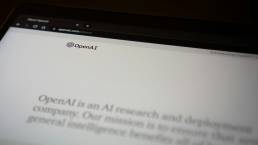Nintendo's Strategic Narrative:
Crafting Joy Through Nostalgia.
Table of Contents.
In the ever-evolving landscape of the gaming industry, Nintendo stands as a beacon of innovation and nostalgia. This iconic company has masterfully woven a strategic narrative that captivates players across generations, blending cutting-edge technology with timeless storytelling.
1. What is a strategic narrative?
Before delving into Nintendo’s approach, let’s understand what a strategic narrative entails. A strategic narrative is a cohesive story that articulates a company’s vision, values, and unique position in the market. It goes beyond mere marketing tactics, serving as a guiding principle that shapes every aspect of the organization’s operations and communications.
In the context of strategic narrative development, Nintendo has crafted a compelling story that resonates with its audience on multiple levels. This narrative not only defines the company’s identity but also influences how consumers perceive and interact with the brand.
2. What is Nintendo’s strategy?
Nintendo’s strategy is multifaceted, built on three core pillars:
- Emotional Connection through Iconic Characters
- Innovation-Driven Blue Ocean Strategy
- Experience-Centric Marketing
Let’s explore each of these elements in detail to understand how they contribute to Nintendo’s overarching strategic narrative.
Emotional Connection through Iconic Characters
At the heart of Nintendo’s strategy lies its ability to create and nurture iconic characters that transcend generations. From Mario and Luigi to Link and Zelda, these characters have become cultural touchstones, evoking nostalgia in older players while captivating new audiences.
Dr. Shigeru Miyamoto, the legendary game designer behind many of Nintendo’s most beloved franchises, once said, “A delayed game is eventually good, but a rushed game is forever bad.” This philosophy underscores Nintendo’s commitment to quality and character development, ensuring that each new iteration of their franchises builds upon the emotional connection players have formed with these virtual heroes.
The power of these characters extends beyond the games themselves. They become ambassadors for the brand, appearing in merchandise, theme parks, and even movies. This multi-faceted approach reinforces the emotional bond between players and Nintendo’s characters, creating a virtuous cycle of engagement and loyalty.
Innovation-Driven Blue Ocean Strategy
Nintendo has consistently employed what business strategists call a “blue ocean strategy.” Instead of competing in crowded markets (red oceans), Nintendo creates new market spaces (blue oceans) through innovative gameplay experiences and unique hardware solutions.
This approach was exemplified by the release of the Nintendo Wii in 2006. While competitors focused on improving graphics and processing power, Nintendo introduced motion controls, making gaming more accessible and interactive for a broader audience. This move expanded the gaming market and positioned Nintendo as a leader in innovation.
Professor W. Chan Kim, co-author of “Blue Ocean Strategy,” noted, “The only way to beat the competition is to stop trying to beat the competition.” Nintendo’s strategy aligns perfectly with this principle, focusing on creating new value rather than battling for existing market share.
The success of the Wii was followed by other innovative products like the Nintendo DS with its dual screens and touch interface, and more recently, the Nintendo Switch, which blurred the lines between home console and portable gaming device. Each of these innovations opened up new ways to play and new markets for Nintendo to explore.
Experience-Centric Marketing
Nintendo’s marketing strategy emphasizes the joy of gaming and social interaction rather than technical specifications. This approach allows the company to appeal to a wide range of audiences, from casual players to hardcore gamers.
Former Nintendo of America President Reggie Fils-Aimé famously stated, “The game is the game. The game is the game. The game is the game.” This mantra encapsulates Nintendo’s focus on the gaming experience itself, rather than getting caught up in hardware specifications or graphical fidelity.
This experience-centric approach is evident in Nintendo’s advertising and promotional materials. Instead of showcasing polygon counts or frame rates, Nintendo commercials often feature families and friends playing together, emphasizing the social and emotional aspects of gaming. This strategy helps Nintendo differentiate itself from competitors and appeal to a broader demographic.
3. What is the positioning strategy of Nintendo?
Nintendo’s positioning strategy is unique in the gaming industry. Rather than competing directly with Sony’s PlayStation or Microsoft’s Xbox on technical prowess, Nintendo positions itself as the purveyor of fun, family-friendly entertainment.
This positioning is evident in their product design, game development, and marketing communications. Nintendo consoles and games are often more colorful, approachable, and inclusive compared to their competitors. This strategy allows Nintendo to carve out a distinct niche in the market, appealing to both hardcore gamers and casual players who might be intimidated by more complex gaming systems.
Dr. David Aaker, a marketing professor and brand strategist, emphasizes the importance of brand personality in positioning. He states, “A brand personality can make a brand more interesting and memorable. It can be a vehicle to express the brand’s emotional and self-expressive benefits.” Nintendo’s brand personality – playful, innovative, and family-friendly – is a crucial component of its positioning strategy.
This positioning extends to Nintendo’s approach to game ratings and content. While other platforms may push boundaries with mature content, Nintendo maintains a focus on games that can be enjoyed by players of all ages. This doesn’t mean they shy away from complexity or depth in their games, but rather that they find ways to make even complex gameplay accessible and enjoyable for a wide audience.
4. What is the Nintendo differentiation strategy?
Nintendo’s differentiation strategy is closely tied to its positioning and overall strategic narrative. The company sets itself apart through several key factors:
- Unique Hardware: Nintendo consistently introduces innovative hardware that changes how people interact with games. From the dual-screen Nintendo DS to the hybrid console-handheld Switch, Nintendo’s devices offer experiences that can’t be replicated on other platforms.
- Exclusive Franchises: Nintendo’s roster of beloved characters and franchises, such as Mario, Zelda, and Pokémon, are exclusive to their platforms. This exclusivity drives hardware sales and fosters brand loyalty.
- Focus on Local Multiplayer: While competitors emphasize online gaming, Nintendo maintains a strong focus on local multiplayer experiences, encouraging social interaction and family play.
- Quality Over Quantity: Nintendo releases fewer games compared to its competitors but maintains a high standard of quality. This approach ensures that each release is an event and maintains the value of their intellectual property.
- Accessibility: Nintendo games are often designed to be accessible to players of all skill levels, with optional challenges for more experienced gamers. This inclusivity broadens their market appeal.
As legendary game designer Shigeru Miyamoto once said, “What if everything was fun? Not just the games, but everything?” This philosophy permeates Nintendo’s differentiation strategy, influencing every aspect of their business.
The unique hardware aspect of Nintendo’s strategy is particularly noteworthy. While other companies might focus on incremental improvements in processing power or graphics, Nintendo often takes bold leaps that redefine how games are played. The Wii’s motion controls, the DS’s touchscreen, and the Switch’s portability are all examples of how Nintendo uses hardware innovation to create entirely new gaming experiences.

The Game Boy, released by Nintendo in 1989, is more than just a handheld gaming console. It’s a cultural touchstone that represents a significant era in gaming history and evokes strong nostalgic feelings for many people.
5. The Power of Nostalgia in Nintendo’s Strategic Narrative
A crucial element of Nintendo’s strategic narrative is its masterful use of nostalgia. By continually reinventing and reimagining its classic franchises, Nintendo taps into the emotional connections formed by players over decades.
Dr. Clay Routledge, a psychological scientist who studies nostalgia, explains, “Nostalgia serves a crucial existential function. It brings to mind cherished experiences that assure us we are valued people who have meaningful lives.” Nintendo leverages this psychological insight to create a powerful bond with its audience.
For example, the release of “The Legend of Zelda: Breath of the Wild” in 2017 reimagined the classic Zelda formula while retaining core elements that longtime fans cherished. This balance of innovation and familiarity exemplifies Nintendo’s approach to using nostalgia as a strategic tool.
Nintendo’s use of nostalgia goes beyond simply rereleasing old games. Instead, they find ways to reimagine classic concepts for modern audiences. The “New Super Mario Bros.” series, for instance, took the side-scrolling gameplay of the original Mario games and updated it with modern graphics and multiplayer features. This approach allows Nintendo to appeal to both long-time fans and new players simultaneously.
6. Adapting to the Digital Age
While Nintendo’s core strategy remains consistent, the company has shown a willingness to adapt to changing market conditions. The launch of mobile games like “Pokémon GO” and “Mario Kart Tour” demonstrates Nintendo’s ability to extend its strategic narrative into new platforms.
However, Nintendo’s approach to mobile gaming remains true to its core values. As former Nintendo President Satoru Iwata stated, “We will not do anything that may hurt Nintendo’s brand image… We are not interested in making short-term profits for the sake of it.”
This cautious yet innovative approach to new technologies aligns with Nintendo’s overall strategy of creating unique experiences that maintain the integrity of their brand. Nintendo’s mobile games are designed to complement rather than replace their console offerings, often serving as gateways to introduce new players to Nintendo’s franchises.
The company has also embraced digital distribution through the Nintendo eShop, allowing players to download games directly to their consoles. However, Nintendo has maintained a strong commitment to physical game releases, recognizing the value that many players place on owning tangible copies of their favorite games.
7. The Future of Nintendo’s Strategic Narrative
As the gaming industry continues to evolve, with emerging technologies like virtual reality and cloud gaming, Nintendo’s strategic narrative will likely adapt while maintaining its core principles.
Industry analyst Dr. Serkan Toto predicts, “Nintendo will continue to surprise us. They have a unique ability to take existing technologies and present them in ways we’ve never imagined.”
This prediction aligns with Nintendo’s history of innovation and its blue ocean strategy. As new technologies emerge, we can expect Nintendo to find creative ways to incorporate them into their unique brand of gaming experiences.
For example, while other companies have heavily invested in virtual reality, Nintendo has taken a more measured approach. Their “Nintendo Labo VR Kit” for the Switch offered a low-cost, family-friendly introduction to VR concepts, consistent with their focus on accessible, innovative play experiences.
Looking ahead, we might see Nintendo explore augmented reality gaming, building on the success of Pokémon GO. They might also find new ways to integrate social gaming experiences, leveraging the increasing interconnectedness of our digital lives while maintaining their emphasis on joyful, shared experiences.
8. Lessons for Other Brands
Nintendo’s strategic narrative offers valuable lessons for brands across industries:
- Emotional Connection: Building strong emotional connections with consumers can create lifelong brand loyalty. Nintendo’s character-driven approach shows how powerful these connections can be.
- Innovation: Focusing on creating new markets rather than competing in existing ones can lead to significant growth opportunities. Nintendo’s blue ocean strategy demonstrates the value of thinking outside the box.
- Consistency: Maintaining a consistent brand identity while evolving with the times can create a powerful, enduring narrative. Nintendo has managed to stay true to its core values while continually innovating.
- Quality Over Quantity: Prioritizing quality can build a reputation for excellence that sets a brand apart from competitors. Nintendo’s approach to game releases emphasizes the importance of delivering high-quality experiences.
- Inclusivity: Designing products and experiences that appeal to a wide range of consumers can expand market reach. Nintendo’s focus on accessibility and family-friendly content has allowed them to reach demographics that other gaming companies often overlook.
- Leveraging Nostalgia: Tapping into consumers’ fond memories can create powerful emotional engagement. Nintendo’s ability to reinvent classic franchises for new audiences shows how nostalgia can be a potent tool when used thoughtfully.
- Adaptability: While maintaining core principles, being willing to adapt to new technologies and market conditions is crucial. Nintendo’s cautious yet innovative approach to mobile gaming illustrates this balance.
In conclusion, Nintendo’s strategic narrative is a masterclass in brand storytelling, innovation, and customer engagement. By consistently delivering joy through innovative gameplay experiences, leveraging nostalgia, and maintaining a focus on quality and accessibility, Nintendo has created a unique position in the competitive gaming industry.
The company’s ability to balance tradition with innovation, to create new markets rather than simply competing in existing ones, and to maintain a clear, consistent brand identity while evolving with the times, sets a powerful example for brands in any industry.
As we look to the future, it’s clear that Nintendo’s strategic narrative will continue to evolve, but its core essence – the pursuit of fun and innovation – will remain at the heart of everything they do. In the words of Nintendo’s current president, Shuntaro Furukawa, “Above all else, we strive to create new and unique experiences that put smiles on people’s faces.” This commitment to joy and innovation is the true power of Nintendo’s strategic narrative, and it’s what will continue to set the company apart in the years to come.
Whether you’re a gamer, a business leader, or simply someone interested in the power of storytelling and brand building, Nintendo’s strategic narrative offers valuable insights and inspiration. It shows us that with creativity, consistency, and a deep understanding of your audience, it’s possible to create a brand story that not only endures but continues to captivate and inspire across generations.
Contact me if you have any questions you’d like answered! And if you enjoyed this article, be sure to check out my analysis of the strategic narratives of Lego, Nike, Apple, Harley Davidson, Patagonia, AirBnB, Netflix, Tesla, Spotify, Warby Parker, Amazon and SpaceX.
Related Posts
January 16, 2025
Unraveling Allbirds’ Strategic Narrative
Discover how Allbirds' strategic narrative drives success through…
November 18, 2024
Crafting the Future: OpenAI’s Strategic Narrative
Explore OpenAI's strategic narrative and discover how storytelling shapes its…
November 18, 2024
Unpacking Shopify’s Strategic Narrative: Rewriting the Rules of eCommerce
Explore how Shopify transformed from a snowboard shop to a global commerce…
November 12, 2024
Canva’s Strategic Narrative: How Design Democratization Created a $40 Billion Empire
Discover how Canva's strategic narrative empowers creativity through…
Related Posts
January 16, 2025
Unraveling Allbirds’ Strategic Narrative
Discover how Allbirds' strategic narrative drives success through…
November 18, 2024
Crafting the Future: OpenAI’s Strategic Narrative
Explore OpenAI's strategic narrative and discover how storytelling shapes its…
November 18, 2024
Unpacking Shopify’s Strategic Narrative: Rewriting the Rules of eCommerce
Explore how Shopify transformed from a snowboard shop to a global commerce…
November 12, 2024
Canva’s Strategic Narrative: How Design Democratization Created a $40 Billion Empire
Discover how Canva's strategic narrative empowers creativity through…







